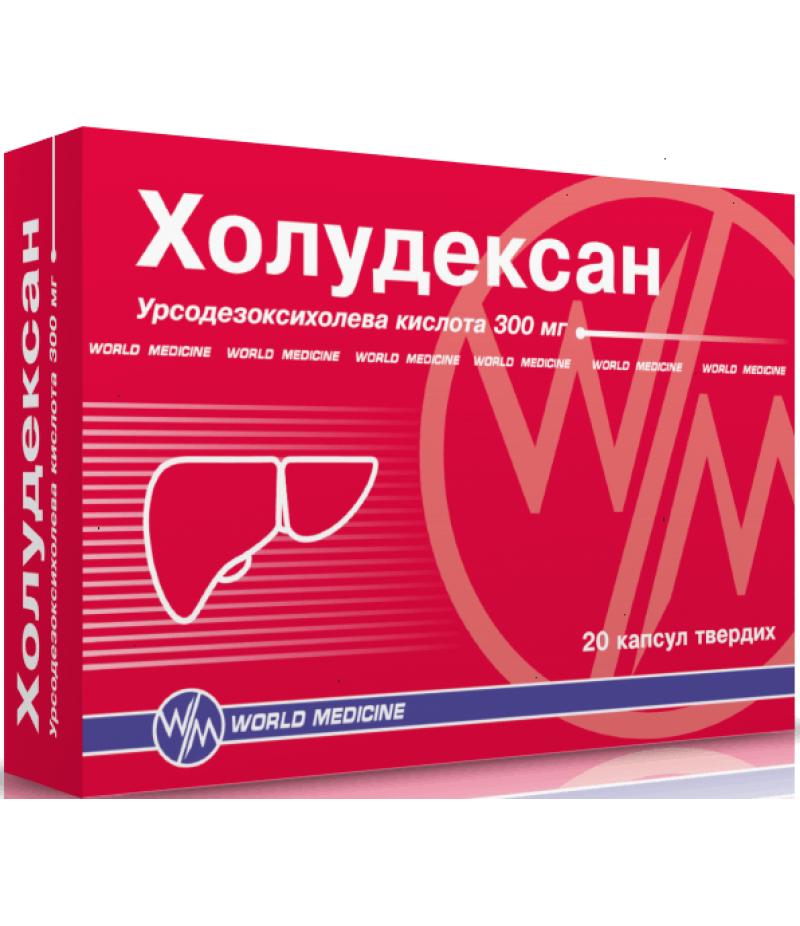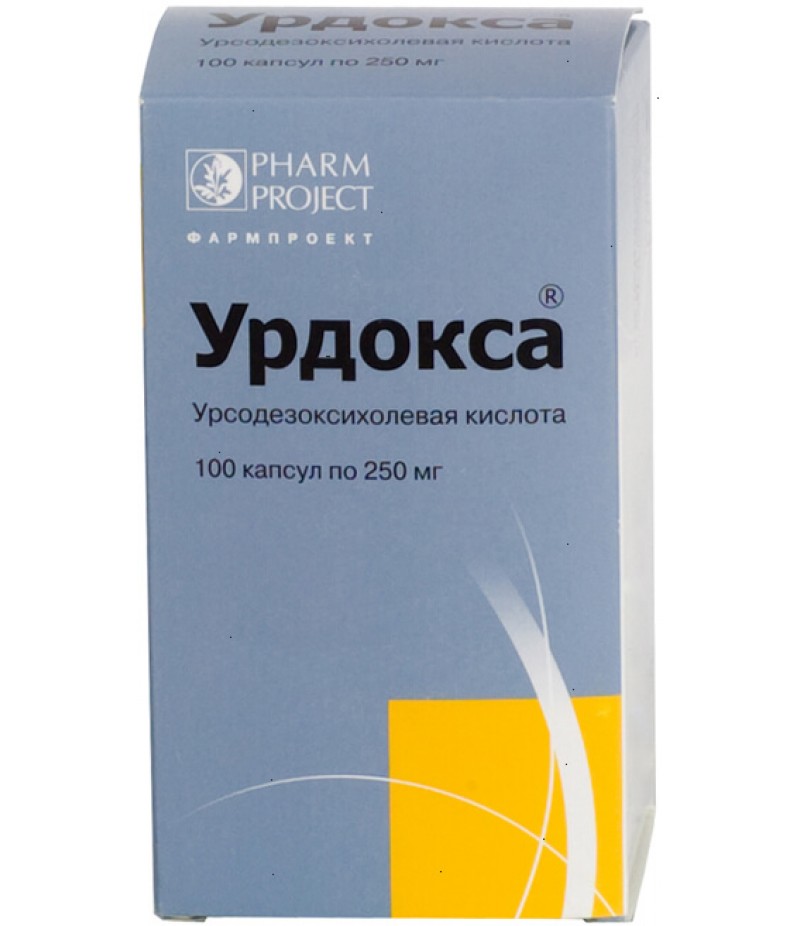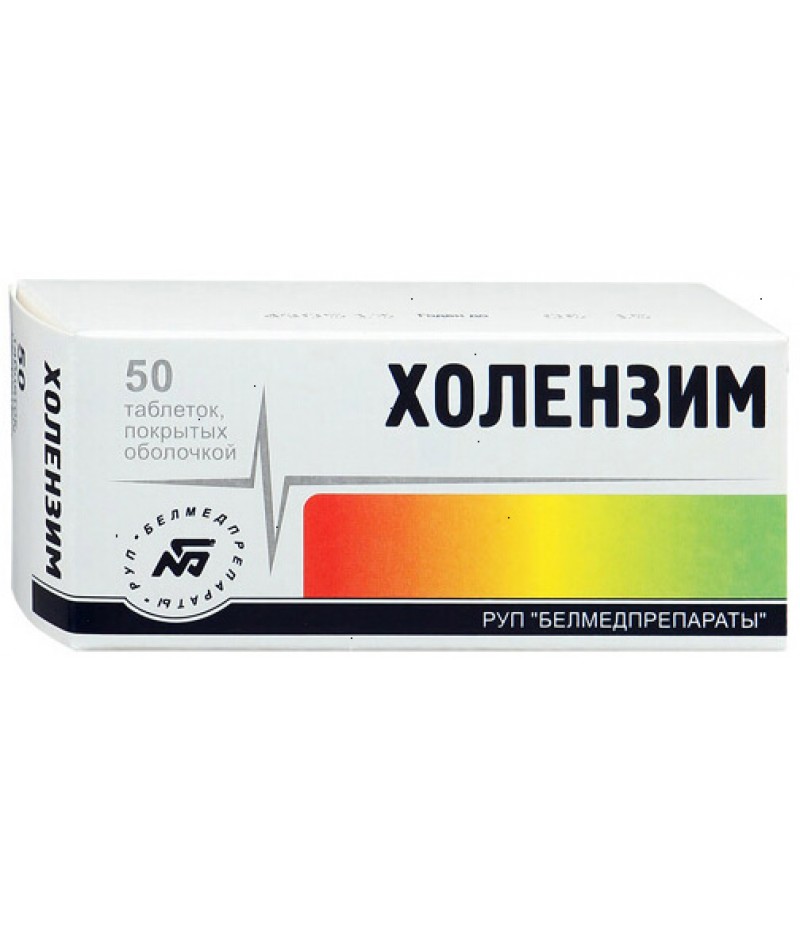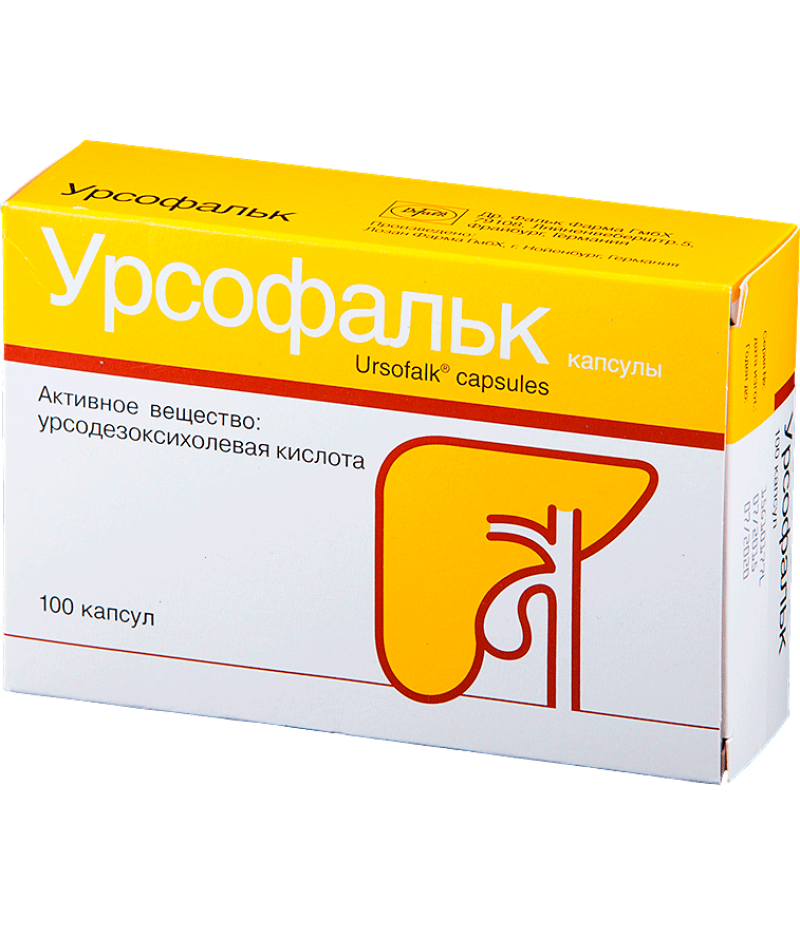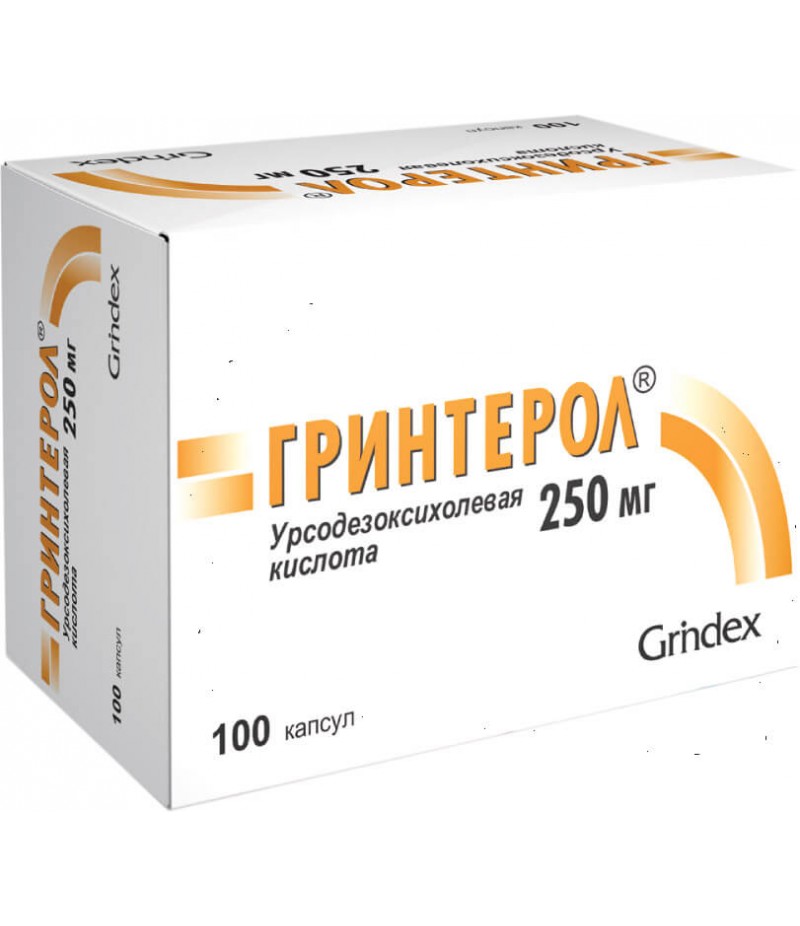Exhole tabs 500mg #50
- $43.99$48.50
- Availability:In Stock
Exhole instruction for useReed more and buy Exhole hereForm of release, composition and packagingTablets covered with a film coating of white or almost white color, oval, with a risk; On a cross-section - white or almost white col..
Tags: tabs
Exhole instruction for use
Reed more and buy Exhole here
Form of release, composition and packaging
Tablets covered with a film coating of white or almost white color, oval, with a risk; On a cross-section - white or almost white color.
1 tab.
ursodeoxycholic acid 500 mg
Excipients: calcium hydrophosphate dihydrate - 40 mg, calcium stearate - 7 mg, sodium carboxymethyl starch - 28 mg, potato starch - 33.5 mg, mannitol - 58 mg, macrogol (polyethylene glycol 4000) - 3.5 mg, povidone K30 - 30 mg.
The composition of the film shell: opadrai white - 20 mg (hypromellose (hydroxypropylmethylcellulose) - 6.75, giprolose (hydroxypropyl cellulose) - 6.75, talc - 4 mg, titanium dioxide - 2.5 mg).
pharmachologic effect
Hepatoprotective agent, also has choleretic, cholelitholytic, hypolipidemic, hypocholesterolemic and some immunomodulating action. Possessing high polar properties, ursodeoxycholic acid (UDCA) forms non-toxic mixed micelles with apolar (toxic) bile acids, which reduces the ability of gastric reflux to damage cell membranes with biliary reflux gastritis and reflux esophagitis. In addition, UDCA forms double molecules that can be incorporated into cell membranes (hepatocytes, cholangiocytes, GIT), stabilize them and make them immune to the action of cytotoxic micelles. Reducing the concentration of toxic to the hepatic cell bile acids and stimulating choleresis, rich in bicarbonates, UDCA effectively contributes to the resolution of intrahepatic cholestasis. Reduces the saturation of bile with cholesterol due to inhibition of its absorption in the intestine, suppression of synthesis in the liver and a decrease in secretion in bile; increases the solubility of cholesterol in bile, forming with it liquid crystals; reduces the lithogenic bile index. The result is the dissolution of cholesterol gallstones and the prevention of the formation of new concrements. Immunostimulating effect is caused by oppression of HLA-1 antigens expression on hepatocyte membranes and HLA-2 on cholangiocytes, normalization of natural killer activity of lymphocytes, etc. Reliably retards the progression of fibrosis in patients with primary biliary cirrhosis, cystic fibrosis and alcoholic steatohepatitis; reduces the risk of developing varicose veins of the esophagus. UDCA slows down the processes of premature aging and cell death (hepatocytes, cholangiocytes, etc.).
Pharmacokinetics
UDCA is absorbed in the small intestine due to passive diffusion (about 90%), and in the ileum through active transport. Cmax in the blood plasma for ingestion of 50 mg after 30, 60, 90 minutes - 3.8 mmol / l, 5.5 mmol / l and 3.7 mmol / l, respectively. Cmax is achieved in 1-3 hours. The connection with plasma proteins is high - up to 96-99%. Penetrates through the placental barrier. With systematic administration, UDCA becomes the main bile acid in the blood serum and accounts for about 48% of the total amount of bile acids in the blood. The therapeutic effect of the drug depends on the concentration of UDCA in the bile.
Metabolised in the liver (clearance during primary passage through the liver) into taurine and glycine conjugates. The resulting conjugates are secreted into bile. About 50-70% of the total dose of the drug is excreted by bile. A small amount of non-absorbed UDCA enters the large intestine, where it undergoes cleavage by bacteria (7-dehydroxylation); the resulting lithocholic acid is partially absorbed from the colon but is sulfated in the liver and is rapidly excreted as a sulfolithocholylglycine or sulfolithocholyltaurine conjugate.
Indications for Exhole
- Dissolution of small and medium cholesterol stones with a functioning gallbladder;
- Biliary reflux-gastritis;
- primary biliary cirrhosis in the absence of signs of decompensation (symptomatic treatment);
- chronic hepatitis of various genesis;
- primary sclerosing cholangitis;
- Cystic fibrosis (cystic fibrosis);
- non-alcoholic steatohepatitis;
- alcoholic liver disease;
- biliary dyskinesia.
Contraindications
- hypersensitivity to ursodeoxycholic acid or any of the components of the drug;
- X-ray positive (high in calcium) gallstones;
- non-functioning gallbladder;
- acute infectious and inflammatory diseases of the gallbladder, bile ducts and intestines;
- cirrhosis of the liver in the stage of decompensation;
- marked hepatic and / or renal insufficiency;
- pancreatitis;
- adults and children with a body weight of up to 34 kg, children under 3 years of age for this LF.
Dosage
Inside, not liquid, squeezed enough water.
Dissolution of gallstones cholesterol stones
The recommended dose of Exhole is 10 mg / kg of body weight per day.
The entire daily intake is taken once for the night. The course of treatment is 6-12 months. For the prevention of repeated formation of stones, it is recommended to take the drug for several months after the dissolution of the stones.
Treatment of biliary reflux gastritis
On 250 mg / sut, before a dream. The course of treatment - from 10-14 days to 6 months, if necessary - up to 2 years.
Symptomatic treatment of primary biliary cirrhosis
The daily dose depends on the body weight and is 10-15 mg / kg / day (if necessary - up to 20 mg / kg) in 2-3 doses in the first 3 months of treatment. After improving the "hepatic" parameters, the daily dose can be applied 1 time in the evening. The duration of the course of treatment is not limited. In rare cases, at the beginning, clinical symptoms may worsen (itching becomes more frequent). In this case, you should reduce the daily dose, and then gradually increase the dosage (weekly increasing the daily dose) until the recommended dosing regimen is reached.
With chronic hepatitis of various genesis, non-alcoholic steatohepatitis, alcoholic liver disease
The drug Exhole is prescribed daily dose of 10-15 mg of ursodeoxycholic acid per 1 kg of body weight in 2-3 doses, continuously for a long time (6-12 months and more).
With primary sclerosing cholangitis and cystic fibrosis (cystic fibrosis)
With the primary sclerosing cholangitis: 12-15 mg / kg / day (up to 20 mg / kg) body weight per day 2-3 admission. Duration of use - from 6 months to several years. With cystic fibrosis (cystic fibrosis): 20-30 mg / kg / day in 2-3 divided doses. Duration of use - from 6 months to several years.
With dyskinesia biliary tract
The average daily dose is 10 mg / kg in 2 divided doses for 2 weeks to 2 months. If necessary, the course of treatment is recommended to be repeated.
If it is impossible to perform the dosing regimen, it is recommended to use the capsule dosage form, Exhole, 250 mg.
Children older than 3 years ursodeoxycholic acid is administered individually, at a rate of 10-20 mg / kg / day.
Side effects of Exhole
Classification of WHO (World Health Organization) incidence of side effects: often from> 1/100 to <1/10 of prescriptions (> 1% and <10%); infrequently - from> 1/1000 to <1/100 of prescriptions (> 0.1% and <1%); rarely from> 1/10000 to <1/1000 appointments (> 0.01% and <0.1%); very rarely - <1/10000 prescriptions (<0.01%).
From the gastrointestinal tract: often - unformed stool, diarrhea (can be dose-dependent); very rarely - in the treatment of primary biliary cirrhosis, transient decompensation of liver cirrhosis can occur (after the drug is withdrawn).
From the liver and bile ducts: very rarely - calcification of gallstones, in the treatment of advanced stages of primary biliary cirrhosis - decompensation of liver cirrhosis, which disappears after drug withdrawal.
From the skin: very rarely - allergic reactions (including urticaria).
Overdose
Cases of an overdose have not been revealed. In case of an overdose, symptomatic treatment is performed.
Drug Interactions
Antacids containing aluminum, ion-exchange resins (colestyramine, colestipol) reduce the absorption of ursodeoxycholic acid. If the use of drugs containing at least one of these substances is still necessary, they should be taken at least 2 hours prior to taking Exhole.
Ursodeoxycholic acid can enhance the absorption of cyclosporine from the intestine. Therefore, in patients taking ciclosporin, it is necessary to monitor its concentration in the blood and adjust the dose of cyclosporine, if necessary.
In some cases, the drug Exhole can reduce the absorption of ciprofloxacin.
Lipid-lowering drugs (especially clofibrate), estrogens, neomycin or progestins increase the saturation of bile with cholesterol and may reduce the ability to dissolve cholesterol bile calculi.
special instructions
To successfully dissolve gallstones, it is necessary that the stones are pure cholesterol, not more than 15-20 mm in size, the gallbladder should remain functional and be filled with stones no more than half, the bile ducts should fully retain their function.
During the first three months of treatment, it is necessary to monitor the activity of "hepatic" transaminases, alkaline phosphatase, gamma-glutamine transferase (GGT), serum bilirubin concentrations every 4 weeks, and then every 3 months.
Holicystography should be performed every 4 weeks in the first 3 months of treatment, then every 3 months. Control of the effectiveness of treatment should be carried out every 6 months during ultrasound and radiographic examination of the biliary tract during the first year of therapy.
Detection during treatment of a nonvisualizable gallbladder is evidence that no complete dissolution of the calculi has occurred, and treatment should be discontinued. In cases of calcification of stones, weak contractility of the gallbladder or frequent attacks of colic, Exhole should not be used. If within 6-12 months after the beginning of therapy of partial dissolution of concrements did not occur, it is unlikely that the treatment will be effective. After complete dissolution of the calculus, it is recommended to continue use for at least 3 months in order to promote the dissolution of stone remains that are too small to detect and to prevent the recurrence of stone formation.
Patients with diarrhea should reduce the dosage of the drug. With persistent diarrhea, treatment should be discontinued.
If long-term therapy with high doses of ursodeoxycholic acid is necessary (up to 30 mg / kg / day), the use of the drug may lead to the development of serious side effects in patients with primary sclerosing cholangitis.
Influence on ability to drive a vehicle and other mechanisms
When using the drug Exhole, the effect on the ability to drive vehicles and mechanisms is not revealed.
Pregnancy and lactemia
The use of Exhole during pregnancy is possible only if the expected benefit for the mother exceeds the potential risk to the fetus. Data on the isolation of UDCA with breast milk are currently not available. If you need to use the drug during breastfeeding, you should decide whether to stop breastfeeding.
Application in childhood
Contraindicated use of the drug for children weighing up to 34 kg and under the age of 3 years.
Children older than 3 years ursodeoxycholic acid is administered individually, at a rate of 10-20 mg / kg / day.
In case of violations of kidney function
Contraindicated use of the drug in patients with severe renal failure
With violations of liver function
Contraindicated the use of the drug to patients with severe hepatic insufficiency and cirrhosis of the liver in the decompensation stage.
Conditions of leave from pharmacies
The prescription is not required to buy Exhole.
Terms and conditions of storage
The drug should be stored in a dry, protected from light and out of reach of children at a temperature of no higher than 25 ° C. Shelf life - 2 years.
Do not use after the expiration date.



